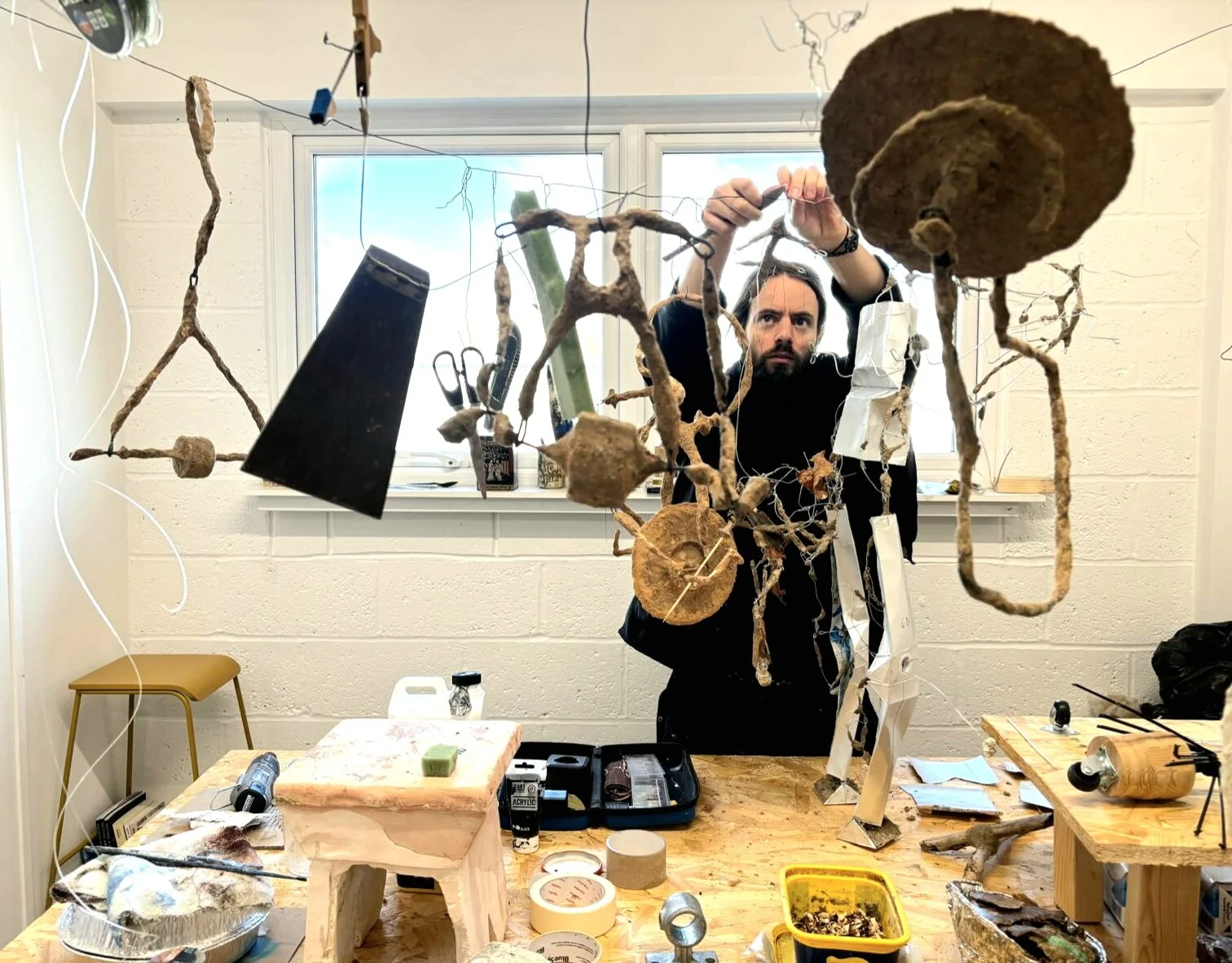In conversation with Joanna van Son
“Painting turns images into objects, and objects into fields of disoriented depths deeper than the flat edge of the canvas.”
- Joanna van Son
Image: Joanna van Son
Joanna van Son is a fine artist based in London. Born in Oman to Venezuelan/Irish and Dutch parents, she grew up in China, Russia, and the United Kingdom, and from a young age was attracted to the intensity of bodily representations in Baroque art, taking particular interest in the dynamic figurations in the paintings of Old Master Caravaggio, as well as Cecily Brown.
Through these inspirations Van Son developed a vital appreciation for process in her work. She then moved towards her current artistic practice while studying at the Bartlett School of Architecture, drawing upon her engagement with both art and architecture to paint the ‘forces’ that lie beneath, revealing the grey zones of reality – the hidden processes that constitute human experience.
Joanna Van Son’s work was recently exhibited in ‘Universe 25’ at Gillian Jason Gallery in Fitzrovia, as part of an impressive group of internationally emerging artists, each exploring the blurred space between utopia and dystopia, which John Calhoun predicted for humanity in a radical study of mice in 1968.
How did you begin your journey into art?
I started drawing before I started painting. As a kid I had fun learning how to draw people’s noses (always as a flat profile on face staring blankly at me, not too concerned with the setting), but later on I turned away from faces and drew bodies on lined patterns and circles. It was a way I could begin to understand movement out of an awkward lens of intimacy, it all culminated out of a sort of anger/frustration mixed with curiosity. I only started painting two years into my architectural studies when I became frustrated with the line-drawing based boundaries of space that I believed didn’t fully explore human interaction with place, in and in-between spaces. I’ve combined my drawing and painting practices in both art and architecture ever since. That being said, its hard to say when exactly it all started, or at least when I felt it had all started. It snuck up on me like a boogey man and all of a sudden, I couldn’t understand the world without it.
Has your heritage and diverse upbringing, living in many different countries, had a specific impact on your work and practice?
I’ve spent my whole life as an expat, an outsider, an invader. I can only claim to understand misunderstanding itself and how difference becomes the only medium for conversation; a sort of tension we can feed on. We will never know the full story, and I guess my work both in art and architecture tries to explore that disorientation in terms of the body.
One thing I will say is because I moved around a lot, I’ve lived in the abstract needing to find objects here and there to ground myself to and that’s what I feel I have found in the studio I am in now. I am obsessed with taking control over my studio and localising the abstract within its walls. The abstract has no location and yet I am fixed to the walls.
We are fascinated by the idea of how your canvases leave their imprints on your studio walls - what do these positive imprints represent to you?
They represent a palimpsest of all the processes and growth bursts I’ve had. It’s 3 years’ worth of scars imprinted from every creation. These coded lumps of paint frame fractures where only pink plaster bone is left (that were carried away by previous paintings). For me it explores a record of belonging that is itself slowly dislocated and reoriented as time goes by. Beyond the subject matter of my work, this wall grounds everything, essentially becoming a beacon for place in my work. It’s a sense of home, a wall, an interior material that gets swallowed up and taken away by the paintings, kind of like information. I am leaving behind a history in the walls, my own history.
Image: Blue III (2022) (c) Joanna van Son
How do you bring architecture into your practice?
I allow the architecture to come through in the way I use drawing and painting in my process to interrogate figural space in the context of colour, texture, stroke affected by the light and life in my studio (place). I always start off with a drawing, I then paint over lines, thickening boundaries with a stroke. The tension between absences and presences of place in the outcome analyse embodied space; cutting through movement and colour.
Painting allows me to explore intellectual labour of design and investigation in to embodied spaces. Painting turns images into objects, and objects into fields of disoriented depths deeper than the flat edge of the canvas. Painting plays with light and constructs/designs within the architecture of colour and bodies catching light.
And a quick fire 5:
Any upcoming projects of note that you can discuss?
I want to get more physical, more object, more material and have traces become bolder as they are eaten, left behind or dislocated.
What have been the most rewarding moments of your career thus far?
Being able to paint every day when I can and come back to something that other people don’t have a hand in changing. All the moments where I regain control in between the moments where I wind myself up and lose it all.
Image: Futile Sacrifice(d): The Donkey Wonders in Gray (2023) © Joanna van Son
What’s the best advice they have ever received?
Find your own way.
Who are you outside of the ‘office’?
A headless chicken running round.
What do you love about London?
Meeting people and having bubbles but also being able to disappear a bit.
Instagram: @juanita_leschnit
Website: juanitavanschnit.com
For more information about ‘Universe 25’ visit www.gillianjason.com

























